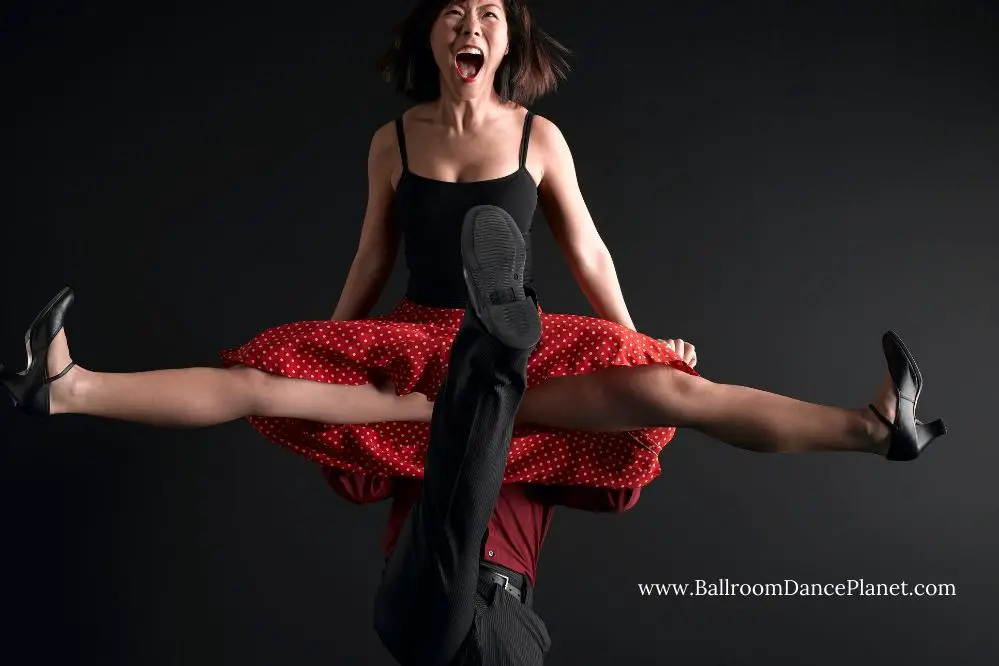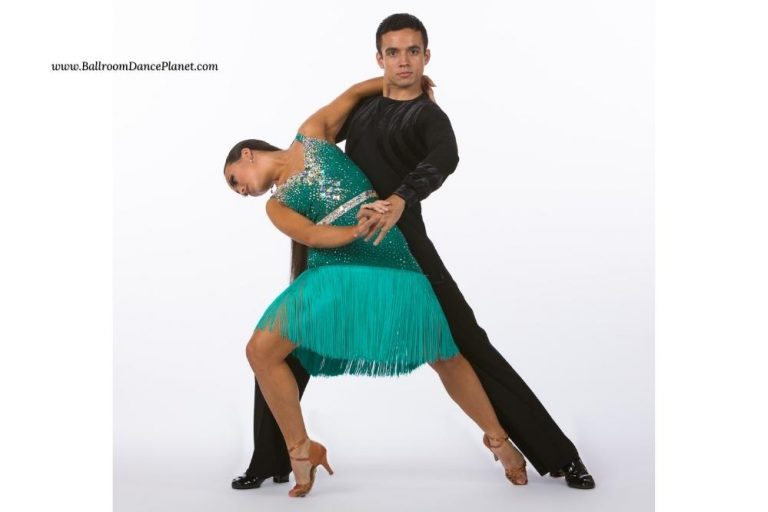Is Swing Dance Considered Ballroom Dancing? Unraveling the Connection

Quick Answer
Yes, Swing is a type of ballroom dancing. It’s characterized by its lively and upbeat tempo and includes styles like the Jitterbug and the Lindy Hop.
Note: We hope you love our articles! Just so you know, as an Amazon Associate, we earn from qualifying purchases. Thank you if you use our links; we really appreciate it!
What are the Different Styles of Swing Dance?
Swing dance includes various styles, each with unique characteristics and historical roots. One of the most well-known styles is the Lindy Hop, which started in Harlem, New York City, in the late 1920s.
This dance is energetic and athletic, featuring kicks, Charleston steps, and aerial moves like flips and throws. Lindy Hop uses 6 and 8-count patterns and is often linked with big band swing music.
Balboa
Balboa is another key style, originating in Southern California in the late 1920s to early 1930s. It is known for its close position, intricate footwork, and smooth turns.
Balboa was developed for crowded dance floors and focuses on a close connection between partners, making it ideal for small spaces.
The Charleston
The Charleston, one of the earliest swing dances, dates back to the 1920s. It includes high kicks, strutting steps, and a lively, rhythmic style influenced by African American dance forms. The Charleston can be danced solo or with a partner.
East Coast Swing
East Coast Swing, a 6-count variation of Lindy Hop, became popular in the 1940s and 1950s. It features a grounded, circular style with a triple-step and rock-step pattern, making it more accessible than Lindy Hop.
West Coast Swing
West Coast Swing, which evolved in the 1950s, is performed in a slotted position with smooth movements. It emphasizes partner connection and musicality and can be danced to various music genres.
Other swing dance styles include Jive, Shag (both Collegiate and St. Louis), Boogie Woogie, Rock and Roll, and regional dances like Push/Whip from Texas.

Is Swing Included in Ballroom Competitions?
Swing dances are generally not included in mainstream ballroom dance competitions. However, certain styles like Jive and East Coast Swing do appear.
These styles fit well within the competitive ballroom dance framework and are showcased alongside traditional ballroom dances such as the Waltz, Foxtrot, Tango, Rumba, and Cha Cha.
Jive, a lively and energetic dance, is one of the five International Latin dances and a staple in ballroom competitions. Its fast-paced movements and intricate footwork make it both a crowd favorite and a challenging addition to the competition.
East Coast Swing, while not as universally included as Jive, is recognized in some competitive ballroom circuits. It is often categorized under the rhythm section in American style ballroom competitions. This dance features simpler moves, making it suitable for ballroom contexts where precision and technique are important.
Other swing dances like Lindy Hop, Balboa, West Coast Swing, and Carolina Shag typically have their own competitions, such as The Open Swing Dance Championships. These events allow dancers to showcase their skills in an environment tailored to swing dancing.
How Does Swing Relate to Ballroom History?
Swing dances, like the Lindy Hop, began in the late 1920s in Harlem, New York. African American dancers combined the Charleston, tap, jazz, and European partner dances to create energetic styles that matched swing jazz music. (Source)
This blend resulted in a lively dance form different from traditional ballroom dances, which originated with the European aristocracy.
Ballroom dances were formal social dances for Europe’s upper classes, featuring structured movements and standardized steps. In contrast, swing dances came from grassroots levels, mixing African folk-dance influences with European traditions. This difference explains why swing initially stood apart from mainstream ballroom styles.
As swing music and dances became popular in the 1930s and 1940s, they began to influence ballroom dancing. Styles like the Shag and Balboa used swing rhythms and movements, showing an exchange of ideas between these dance forms. However, swing’s athleticism, grounded nature, and improvisational spirit made it less compatible with traditional ballroom dances.
Over time, more structured swing styles, such as East Coast Swing and West Coast Swing, gained acceptance within the ballroom community. While classic swing styles like the Lindy Hop remain distinct and celebrated in swing dance competitions, ballroom organizations have increasingly included West Coast Swing in their repertoire. This shows a gradual integration of swing elements into ballroom dancing.







